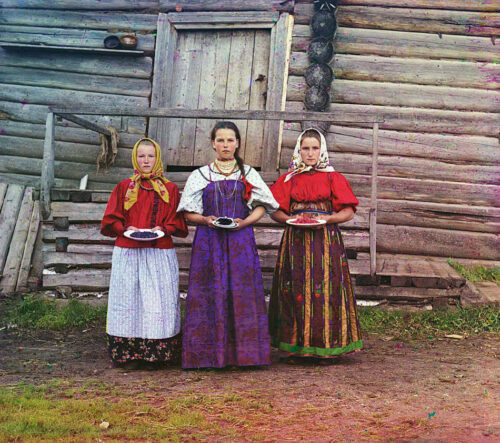
To those in the West, Russia has always been an ominous presence: gigantic, mysterious, exotic, unknown, perhaps a little backward and faintly dangerous. In the decades prior to the Russian Revolutions of 1917, Westerners knew even less about it. The British, for example, had been raised on a politically-motivated 19th century diet of animosity and paranoia about Russia and its people. These hostilities, which dated back to the Crimean War of the 1850s and imperial competition in the east, painted an unappealing picture of Russia. The Russian tsar (emperor) was a vicious tyrant, its nobles a powerful but uncivilised tribe; the Russian people a brutalised and long-suffering horde of peasants. Russian society, culture and religion were unreformed, still essentially medieval. English satirical cartoons of the 1800s portrayed the Russian nation as a huge bear: slow and lumbering but inherently dangerous.
“The whole mistake of our decades-old policy is that we still have not realised that since the time of Peter the Great and Catherine the Great, there has been no such thing as ‘Russia’. What we have is the Russian Empire. Since 35 per cent of the population consists of aliens, and Russians are divided into Great Russians, Little Russians and White Russians, we cannot… conduct a policy which ignores the peculiarities of the other nationalities belonging to the Empire. The watchword of such an empire cannot be ‘Let us turn everyone into genuine Russians’.”
Sergei Witte, tsarist minister
Despite its size, Russia’s political, social and economic development lagged behind the other ‘Great Powers’ of Europe: Britain, France and Germany. For the most part, Russia’s 19th century rulers did not embrace change or modernisation; they were reluctant to alter Russia’s government or social structures. As a consequence, many aspects of Russian life reflected medieval rather than modern values. Until 1861, most of Russia’s agricultural farmers were bonded serfs: they could be bought and sold with the land. It took a military defeat to instigate long-awaited reforms. Russia’s defeat in the Crimean War exposed its technical and industrial shortcomings, revealing a nation lacking industrial strength and infrastructure. These shortcomings placed Russia at risk in the event of another war with her more advanced continental neighbours.

1. Russia was not a nation but an empire, spanning an enormous area and covering one-sixth of the Earth’s landmass.
2. Russia was inhabited by more than 128 million people of considerable ethnic, cultural, religious and linguistic diversity.
3. Until the mid-1800s Russia’s social structure was semi-feudal, most Russians living in rural areas as bonded serfs.
4. Defeat in the Crimean War exposed the need for social and economic reform, a process initiated by Tsar Alexander II.
5. During the second half of the 1800s, Alexander’s reforms – as well as some attempts to wind back those reforms – triggered significant change, social unrest and revolutionary sentiment in Russia.
© Alpha History 2018. Content on this page may not be republished or distributed without permission. For more information please refer to our Terms of Use.
This page was written by Jennifer Llewellyn, John Rae and Steve Thompson. To reference this page, use the following citation:
J. Llewellyn et al, “An introduction to Russia” at Alpha History, https://alphahistory.com/russianrevolution/introduction-to-russia/, 2018, accessed [date of last access].
